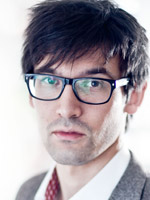By: Leif Denti
Conflict is a dreaded word. Most people associate conflict with interpersonal clashes ranging from inelegant avoidance tactics in the breakroom to fierce and open hostility. Surely, it is obvious that conflict in teams is detrimental to creativity and innovation. But is it? In this post we will explore this matter further and see when conflict sometimes can enhance the creative thinking skills of teams.
Conflict is often differentiated into relational and task conflict (Jehn, 1995). Task conflict refers to disagreements in opinions, viewpoints and ideas about how the group task, and related activities in solving the task, should be performed. Thus task conflict is concerned with the work performed by the team, rather than individuals in the team. However, when the word conflict is mentioned, people most often think about relational conflict. This kind of conflict refers to interpersonal disagreements and clashes. Relational conflicts consume a tremendous amount of mental energy and individuals involved in this kind of conflict typically experience negative emotions such as stress, frustration, fear and anger.
The two types of conflict and creative thinking
Although perhaps counterintuitive, task conflict has been suggested to trigger creativity and team innovation because of several factors. First, the conflict forces the team to seek and exchange more information regarding the conflict’s main issue. Second, when task conflict is present, team members are prompted to explicate their differences in perspectives, which may not happen otherwise. Third, task conflict may force the team to renegotiate goals and make better sense of problems, which has been linked to better and more original solutions in experimental studies (e.g. Redmond, Mumford & Teach, 1993). Thus, task conflict challenges the status quo – the established way of doing things – which may trigger creative solutions in solving problems and meeting goals (Hülsheger et al., 2009; Shalley & Gilson, 2004).
Relational conflict on the other hand is thought to negatively impact creativity and innovation (Hülsheger et al., 2009). This type of conflict is thought to narrow the range of attention and produce rigid thinking. When relational conflict is high in a team, basic functioning such as information exchange and attentiveness to others’ ideas are impeded, effectively lowering the capacities for creative thought and innovation.
Take-away for managers: a moderate degree of conflict
However, empirical findings on task/relational conflict and innovation are mixed. Hülsheger et al. (2009) analyzed results from 21 studies on these relationships and could not convincingly show that either type of conflict is related to team innovation because the relationships in the studies were both positive and negative.
Having in mind these mixed findings on conflict and innovation, some scholars propose that there may instead be a curvilinear relationship between task conflict and innovation. The potential for innovative outcomes is at its highest when the level of task conflict is moderate (Anderson, De Dreu & Nijstad, 2004; Hemlin, Martin & Allwood, 2008). The reasoning is that too low task conflict will not spark the exchange of perspectives and information, nor prompt team members to examine and make sense of goals and objectives. In innovative work, this is especially important because objectives and accompanying problems are often novel and can be solved in several different ways (Reiter-Palmon & Ilies, 2004). On the other hand, too high task conflict and communication may break down, effectively stifling exchange of information, knowledge, ideas and perspectives. These are factors that are all related to performance creativity and innovation (Mumford, Scott, Gaddis, & Strange, 2002).
Thus, managers and leaders could do well to encourage a low to moderate degree of disagreements pertaining to task conflict; how the team should meet its objectives, while keeping the degree of relational conflict low. There are several ways to either increase or decrease the degree of task conflict, which I write about in a related article on team diversity and innovation.
By Leif Denti
About the author
 Leif Denti is pursuing his doctoral degree of Psychology at the University of Gothenburg, Department of Psychology. His main research venue is how project leaders stimulate creativity and innovation in their project teams (project name: Management for Sweden). Leif Denti is also involved in a research project at the School of Business, Economics and Law, University of Gothenburg, studying organizational factors that may influence problem solving in project teams. Leif Denti holds a licentiate degree in Psychology at the University of Gothenburg.
Leif Denti is pursuing his doctoral degree of Psychology at the University of Gothenburg, Department of Psychology. His main research venue is how project leaders stimulate creativity and innovation in their project teams (project name: Management for Sweden). Leif Denti is also involved in a research project at the School of Business, Economics and Law, University of Gothenburg, studying organizational factors that may influence problem solving in project teams. Leif Denti holds a licentiate degree in Psychology at the University of Gothenburg.
References
Hemlin, S., Allwood, C. M., & Martin, B. R. (2008). Creative knowledge environments. Creativity Research Journal, 20, 196–210.
Hülsheger, U. R., Anderson, N., & Salgado, J. F. (2009). Team-level predictors of innovation at work: A comprehensive meta-analysis spanning three decades of research. Journal of Applied Psychology, 94, 1128–1145.
Jehn, K. A. (1995). A multimethod examination of the benefits and detriments of intragroup conflict. Administrative Science Quarterly, 40, 256-282.
Mumford, M. D., Scott, G. M., Gaddis, B., & Strange, J. M. (2002). Leading creative people: Orchestrating expertise and relationships. The Leadership Quarterly, 13, 705–730.
Redmond, M. R., Mumford, M. D., & Teach, R. (1993). Putting creativity to work: Effects of leader behavior on subordinate creativity. Organizational Behavior and Human Decision Processes, 55, 120–151.
Reiter-Palmon, R., & Illies, J. J. (2004). Leadership and creativity: Understanding leadership from a creative problem-solving perspective. The Leadership Quarterly, 15, 55–77.
Shalley, C. E., & Gilson, L. L. (2004). What leaders need to know: A review of social and contextual factors that can foster or hinder creativity. The Leadership Quarterly, 15, 33–53.
